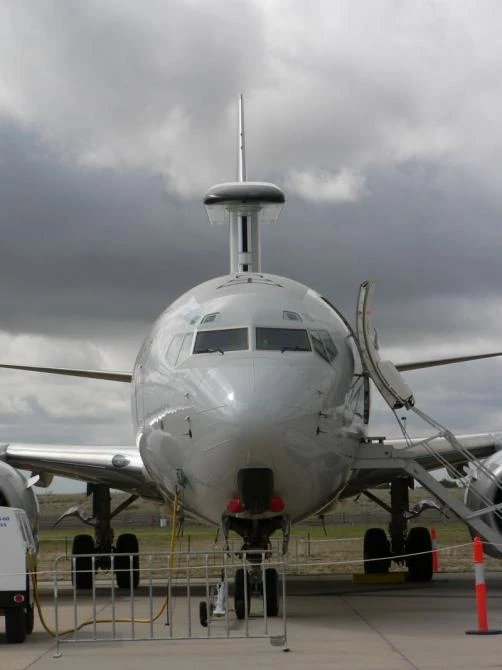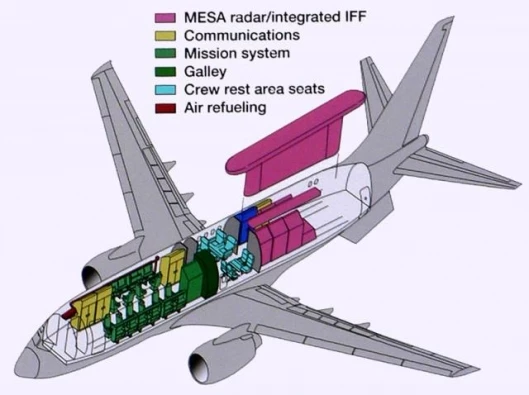July 10, 2005 - Boeing has successfully completed the aircraft performance and flight handling test program with the first 737 airborne early warning and control (AEW&C) aircraft which is bound for Australia where it is named Project Wedgetail after the country’s indigenous bird of prey, the Wedgetail Eagle. The 737 AEW&C is designed to provide airborne battle management capability with 10 state-of-the-art mission system consoles and is part of Boeing’s vision for an integrated battlespace where real-time information is quickly and simultaneously accessible to aircraft and forces and commanders on the ground, at sea and in the air.
“The plane performed superbly in terms of its avionics, structure, systems, flight handling characteristics and performance,” said Patrick Gill, Boeing vice president of 737 AEW&C programs. “This milestone validates the aircraft’s digital design, and wind tunnel and simulator analyses. It is a major step forward in providing this powerful, new capability to Australia.”
The aircraft exceeded all specification requirements for altitude, speed and endurance. It logged more than 245 flights and more than 500 flight hours. Takeoff performance, flight handling and simulated air to air refueling testing were conducted at Edwards Air Force Base, Calif. Engine nacelle and engine component cooling were tested in Mesa, Arizona. Additional tests included icing and crosswinds.
Flight testing of the airborne early warning and control mission system, including the MESA radar, is scheduled for later this year. Australia has purchased six aircraft for its Wedgetail fleet. Delivery of the first two aircraft currently being modified in Seattle, Washington, is scheduled for November, 2006, with the other four aircraft delivered by 2008. Turkey has purchased four of the aircraft for its Peace Eagle program.
The 737 series is one of the most popular and reliable jet aircraft in the world and that has resulted in a worldwide base of suppliers, parts and support equipment. The 737 AEW&C is designed to provide airborne battle management capability with 10 state-of-the-art mission system consoles. It continues more than 30 years of Boeing tradition in airborne surveillance and command and control with the 707 and 767 AWACS fleets. Currently the aircraft are operated by the United States, NATO, the United Kingdom, France, Japan and Saudi Arabia.
Northrop Grumman’s Multi-role Electronically Scanned Array (MESA) radar is the critical sensor aboard the 737 AEW&C.; The MESA array is designed to provide optimal performance in range, tracking, and accuracy. The radar is able to track airborne and maritime targets simultaneously and can help the mission crew direct the control of high-performance fighter aircraft while continuously scanning the operational area.












